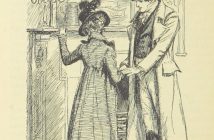For the past however many years, television – like every other form of entertainment – has been dominated by men, with the leading characters of the most popular shows being invariably male. The reasons for this are the same as they always are: the industry is led by a majority of male executives and producers who are for the most part unwilling to deviate from a tried and tested formula. If shows like House and 24 are popular, then it follows that shows similar to those will be popular as well. The traditional image of the powerful male lead is deeply entrenched in the entertainment industry, and though that does not exclude strong female characters from television, they are always consigned to supporting roles or love interests.
If you look at the most popular and critically acclaimed shows of the past decade, the trend is irrefutably one of a male character leading and embodying said shows. Breaking Bad was the story of Walter White, Mad Men has Don Draper, 24 Jack Bauer and House the eponymous Dr. House. Even in the shows that feature more of an ensemble cast, it is always the male characters who drive the story. In The West Wing C.J. was really the only main character who was female, and in Lost, despite the number and quality of its female characters, the two most important characters are Jack and Locke, both men.
There have been exceptions to this dominance of the male lead, most notably in Friends and Sex and the City. Rachel, Monica, and Phoebe were all leading female characters, and they were given just as much focus and importance as their male counterparts throughout Friends’ ten year run. Sex and the City is obviously a female driven show. Both of these shows, as well as operating outside the traditional gender roles in entertainment, were hugely successful for the entirety of their time on air. It is important to consider, however, that both of these shows were comedies, with drama in television being much less open to having female characters as leads. Also, despite its main cast being all female, Sex and the City is hardly a feminist, egalitarian portrayal of women.
Change is coming. In 2012, for example, Homeland became the first show with an actual leading female character to win the Emmy for Outstanding Drama this century. The show’s lead, Carrie Mathison (played by Claire Danes), has been praised as one of the “strongest female characters” currently on television (Hank Stuever, The Washington Post) and is what lifts Homeland above other crime/espionage shows.
In Game of Thrones, arguably the most popular show currently on air, the female lead is dominant. Daenerys Targaryen (Emilia Clarke) and Cersei Lannister (Lena Heady) are two of the show’s most important main characters, and of the six characters who have featured in most episodes, four of them are female (Daenerys and Cersei, as well as Arya and Sansa Stark). Game of Thrones may have an ensemble cast, but it is a cast that is bursting with strong, well-written female characters who all drive its sprawling plot rather than being forced to react to their male counterparts (like in Lost, or The Walking Dead).
The most influential show as far as female characters go, however, is Orange is the New Black. Not only is its main character female, almost the entire cast is. The whole show revolves around female characters and female stories. While there are comedic aspects to the show, it’s clear that it is more drama than comedy, as the recent decision to include it in the drama category for the Emmys from now on demonstrates. There’s no real male influence in the show, it’s created, produced and written mainly by women, it has no misogynistic tint to its plot – the story is rarely, if ever, about women needing to be with men, nor does it hide its female characters behind a few men who get most of the action.
What is most ground-breaking about OITNB, though, is its success. A few years ago it would have been preposterous to suggest that such a female-centric show could draw such a huge audience, both male and female, and yet that is just what OITNB has done. OITNB is a new show for a new time. The wave of serious, daring, and creative television of the past decade has shown how powerful a medium television can be. Now with the rise of Netflix, attitudes towards what television are being challenged once more. As one of Netflix’s two flagship shows, OITNB is at the heart of this. Executives and producers across the globe will see how successful this female-driven show has been (and it has been enormously successful), and they’ll jump on the bandwagon. The self-perpetuating nature of television has shifted and now, rather than keep the female lead buried, it will help her come forward and take centre stage.
Orange is the New Black returns to Netflix on the 12th June.



